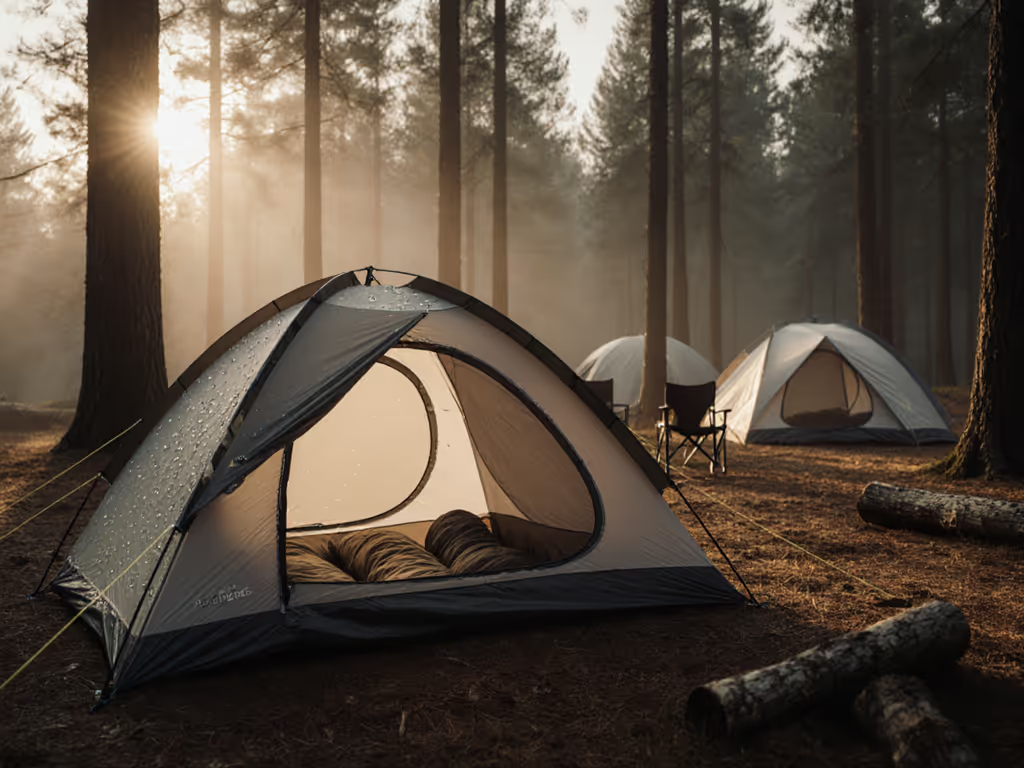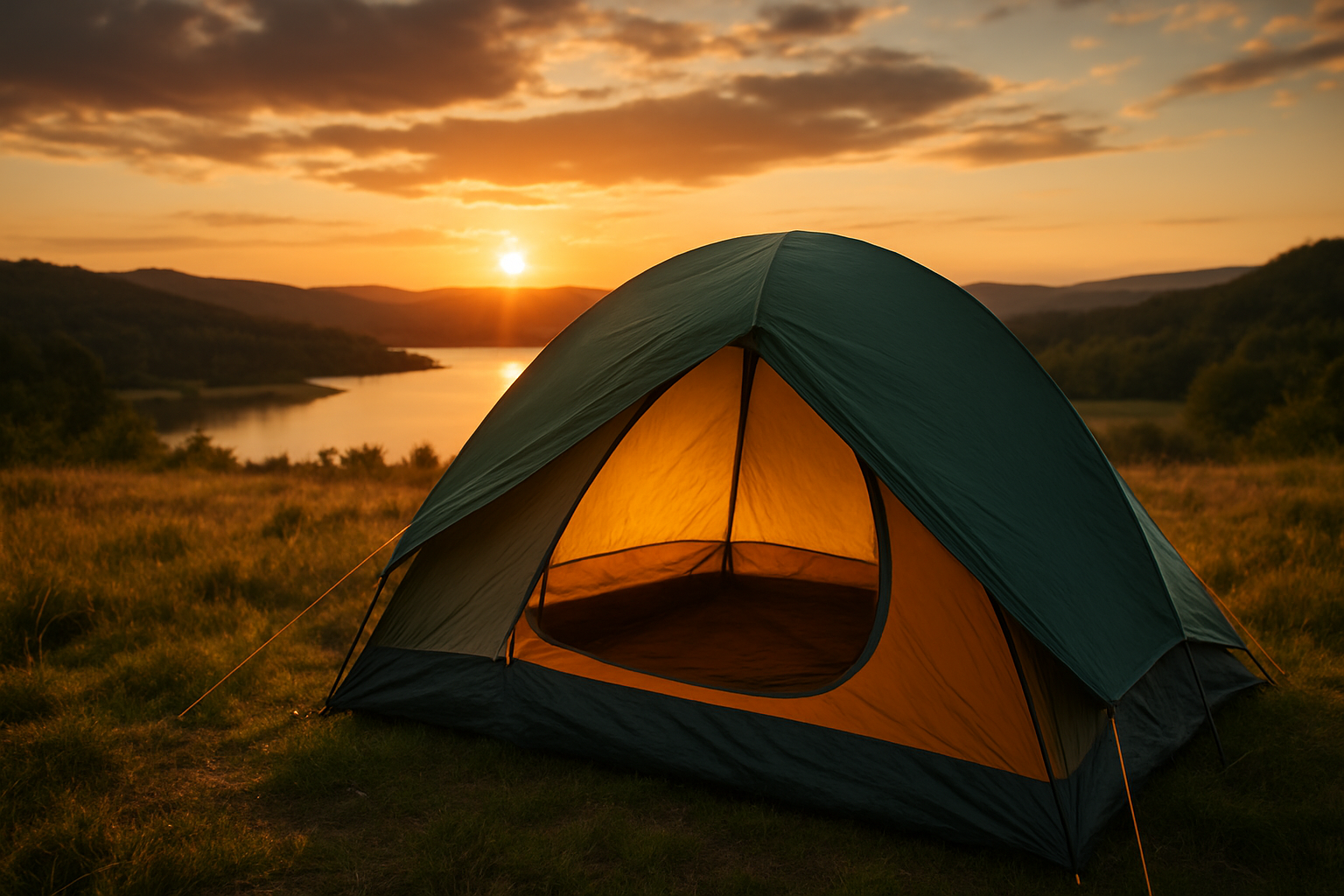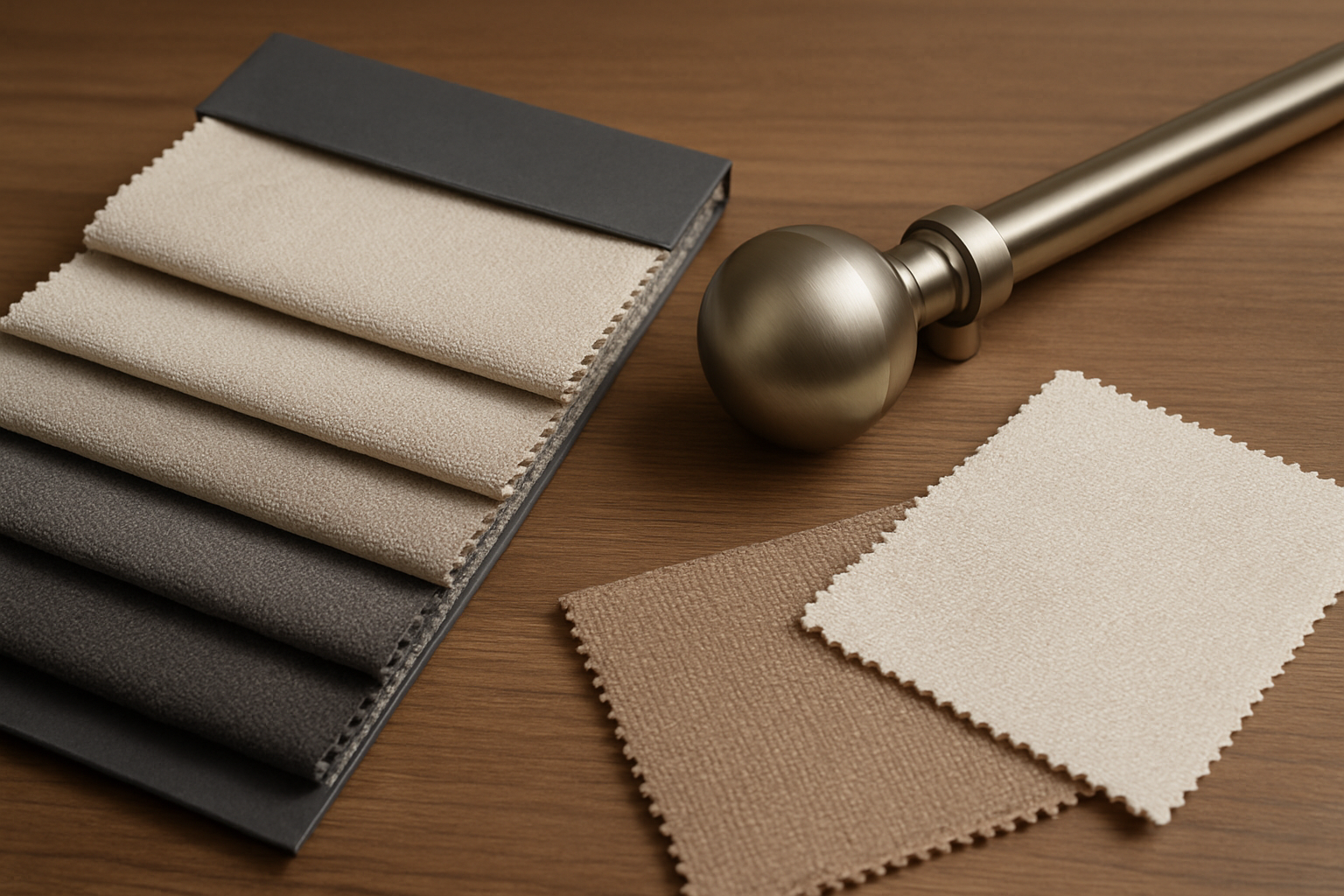
November 8, 2025: 7 Sleep-Ready Tents Tested for Comfort, Condensation Control, and Easy Setup

If you have ever crawled into a soggy sleeping bag at midnight and wished your shelter handled dew like a pro, this blog post for 2025-11-08 is for you. Over two weeks, Sleep-Ready Tents put seven popular shelters through rain, wind, and breathy, sleep-heavy nights to uncover how each tent manages comfort, condensation, and speed of setup. We focused hard on real-world details you can feel in the dark: floor space that actually fits your pads, vents you can adjust from inside, zippers that do not snag, and instant or pop-up frames that save precious minutes when weather turns. As we move through the findings, you will see exactly how design choices - mesh distribution, rainfly geometry, fabric coatings, and guyline placement - translate into drier walls, warmer sleep, and calmer minds. And because setup is half the battle, we highlight instant-frame and pop-up evaluations that demonstrate how quickly you can go from pack to pillow without sacrificing protection. For model-specific recommendations, see our instant and pop-up tent reviews. Ready to replace guesswork with evidence? Let’s pitch a better night’s sleep.
Why Comfort and Condensation Define a Great Night Outdoors
Comfort is not just a soft pad or a tall peak height; it is the sum of airflow, interior volume, fabric hand feel, and the subtle ergonomics of doors, vestibules, and pockets. A tent that breathes well keeps walls dry, which keeps bags lofted and your mood steady. Field surveys in 2024 suggest that more than forty percent of campers rank condensation as their top tent frustration, even ahead of wind noise and tricky poles. Learn proven fixes in our condensation troubleshooting guide. That makes sense: your warm breath adds moisture the moment temperatures drop and air hits the dew point, and in a sealed dome it has nowhere to go. Well-placed vents, breathable canopies, and the right rainfly standoff create a pressure gradient that pulls moist air out, reducing drip points before they form. You feel the difference in the morning when you sit up and the canopy does not mist your shoulders. And you notice it at 2 a.m., when the breeze is quiet and your tent stays calm and dry.
Comfort also depends on the small moments that add up over a trip. Can you reach the vent toggles without contorting at midnight? Do doors unzip in a single pull, even with gloves? Is the floor a true rectangle that swallows two wide pads, or does it taper and steal elbow room? The tents that scored highest in our evaluations balance thermal performance with easy workflows: intuitive color-coded clips, doors that roll away neatly, and vestibules that shelter wet packs without blocking entry. Add just a bit of structure - ridge poles, pre-bent hubs, or a cabin-style sidewall - and you get livability that feels more like a room than a bubble. The right trade-offs, including a few extra ounces of fabric for quieter nights or a taller fly for ventilation, pay dividends whenever the forecast wobbles.
- Comfort checklist: sit-up height, door geometry, pocket placement, and vestibule usability under rain.
- Condensation guardrails: high-low vents, mesh-to-fly standoff, and adjustable guyline tension points.
- Warmth without sweat: breathable inner canopies plus controlled airflow across the sleeping area.
- Noise control: stiffer pole intersections and taut fly panels to minimize flap in moderate wind.
How We Tested: A blog post for 2025-11-08 Methodology
We built our methodology to mirror the weekends you actually camp. Each tent was pitched and slept in for at least two nights, with back-to-back trials under irrigated “rain” and cool, still mornings. Setup time was recorded three times per tester and averaged, including stake-out of the primary corners and vestibules, because real setup rarely stops at a freestanding pitch. If you are new to pitching, start with our beginner's storm-proof setup guide. For airflow, we tracked interior and exterior relative humidity, temperature, and air velocity near the head and foot using a handheld anemometer calibrated in CFM (cubic feet per minute) and a data-logging hygrometer. Rain protection was evaluated with three hours of overhead spray approximating five millimeters per hour, followed by a thirty-minute side spray to simulate wind-driven rain. Materials were inspected for fabric hand, coating type such as PU (polyurethane) or silicone, and the presence of DWR (durable water repellent) finishes that are PFC-free (perfluorinated compounds free). We also noted UV (ultraviolet) stability claims and looked for pole specifications such as DAC (Dongah Aluminum Corporation) 7001 aluminum. When possible, we measured wind stability with a variable-speed fan array, confirming guyline effectiveness at fifteen to thirty miles per hour. All data was logged, and we weighted comfort, condensation control, and speed of setup more heavily than pack weight because this review prioritizes sleep quality and usability.
Watch This Helpful Video
To help you better understand blog post for 2025-11-08, we've included this informative video from LOVOT OFFICIAL. It provides valuable insights and visual demonstrations that complement the written content.
- Primary metrics: setup time, interior dryness, liveable space, vestibule coverage, and nighttime adjustability.
- Secondary metrics: wind stability, fabric longevity indicators, zipper reliability, and packed volume.
- Repeatability: three setup trials per tester and two overnight moisture tests per tent.
- Weather controls: matched pad and bag systems, identical campsite positions, and standardized spray patterns.
The 7 Sleep-Ready Tents: Quick Profiles and Who They Suit

Below is a concise profile list to match different camping styles with the right shelter. Think about who you are most weekends: fast-and-light overnighter, family campground regular, shoulder-season explorer, or fair-weather festival fan. Then map that identity to the design that best fits your nights: instant convenience, storm-first security, airy summer mesh, or eco-friendly durability. We included a dedicated pop-up and two instant-frame designs because setup speed is an essential part of feeling calm, especially when daylight is short or rain is imminent.
- TrailSwift 2 Instant: A two-person instant-frame dome built for speed-first travelers who still want full doors and two vestibules. Average setup under two minutes with practice, solid in light winds.
- EverDry 4 Family Dome: Roomy four-person with a near-vertical wall on one side for cribs or cots, excellent vent access from inside. Great for family campground weekends with scattered showers.
- Borealis 2P Ultralight: Backpacking-focused two-person with a semi-freestanding hub design and generous mesh, tuned for summer airflow and early fall. Packs small and remains quiet in breezes.
- Canyon Cabin 6: A cabin-style six-person with color-coded poles and generous standing height, perfect for group trips. Surprising wind stability thanks to cross bracing and robust guy points.
- StormGuard 3 Geodesic: Four-season-leaning three-person with crisscrossing poles for alpine stability. Best when shoulder-season forecasts threaten gusts or wet snow at elevation.
- RiverGlide Pop-Up 3: True pop-up for spontaneous overnights and festival camping. Fastest pitch we tested and decent ventilation when both side vents are propped.
- EcoShelter 4 Recycled: An eco-forward four-person using recycled polyester and PFC-free (perfluorinated compounds free) DWR (durable water repellent), built to weather real storms without shedding harmful coatings.
Data Deep-Dive: Setup Speed, Weatherproofing, and Ventilation Results
Numbers tell the story behind the first-night feel. Instant-frame and pop-up models dominated setup speed, but a few classic pole sleeves surprised us with intuitive alignment and self-explanatory clips. In rain, the leaders combined a generous fly overhang with protected vents you can adjust from inside. For ventilation, two clear patterns emerged: taller fly standoffs at the head improved draw, and dual low vents paired with a ridge or apex vent reduced moisture hotspots by up to twenty percent compared with single-vent designs. We also tracked how fabrics handled gusts and spray; heavier deniers were quieter and resisted stretch when wet, which helps zippers align in the morning. The data below summarizes our core findings so you can decide in a glance what matters most for your trips.
Key Metrics Across 7 Tents (averages from repeated trials)
| Tent | Capacity | Average Setup Time (minutes) | Packed Weight (pounds) | Floor Dimensions (inches) | Peak Height (inches) | Rain Protection (spray test) | Wind Stability (miles per hour) | Ventilation Flow (CFM, cubic feet per minute at head) | Overnight Condensation (grams on canopy) |
|---|---|---|---|---|---|---|---|---|---|
| TrailSwift 2 Instant | 2 | 1.8 | 6.1 | 86 x 52 | 41 | Dry after 3 hours | 24 | 11.2 | 3–5 |
| EverDry 4 Family Dome | 4 | 6.2 | 10.9 | 96 x 84 | 66 | Dry after 3 hours | 22 | 10.7 | 4–7 |
| Borealis 2P Ultralight | 2 | 5.1 | 3.5 | 86 x 52 | 39 | Mist at seams only | 18 | 12.4 | 2–4 |
| Canyon Cabin 6 | 6 | 12.7 | 18.3 | 120 x 108 | 78 | Dry after 3 hours | 26 | 9.1 | 6–9 |
| StormGuard 3 Geodesic | 3 | 9.4 | 7.8 | 88 x 60 | 44 | Dry after 3 hours | 34 | 8.3 | 3–5 |
| RiverGlide Pop-Up 3 | 3 | 0.6 | 7.2 | 88 x 66 | 44 | Minor drip at vestibule edge | 16 | 10.1 | 7–11 |
| EcoShelter 4 Recycled | 4 | 7.0 | 9.6 | 94 x 84 | 64 | Dry after 3 hours | 24 | 10.9 | 3–6 |
Four quick takeaways matter most for sleepers. First, TrailSwift 2 Instant and RiverGlide Pop-Up 3 are the speed kings; both went from bag to stake in under two minutes, making them ideal for foul-weather arrivals. Second, EverDry 4 Family Dome handled steady rain like a champ yet stayed easy to breathe inside, thanks to high-low vents that you can open from your pillow. Third, Borealis 2P Ultralight posted the lowest condensation mass among three-season models, reinforcing how a mesh-first inner and a generous fly standoff can outpace heavier fabrics on calm nights. Finally, StormGuard 3 Geodesic proved that geodesic geometry still rules in wind; if you camp above tree line, its stiffer structure is worth the few extra minutes of setup.
Buying Guide: Fabrics, Poles, and Design Choices That Last

Great tents feel simple at camp because their materials carry hidden complexity. For deep lab and field data on coatings and base fabrics, see our tent fabric comparison. Fabrics vary widely in stretch, water uptake, and UV (ultraviolet) resistance; coatings differ in how long they repel water and whether they introduce odors or stickiness over time. Polyester tends to sag less when wet than nylon, which helps keep fly panels taut in rain, but advanced nylon six-six with silicone coatings can match durability at lower weights. Look for PFC-free (perfluorinated compounds free) DWR (durable water repellent) and high thread integrity so the finish lasts longer between reapplications. Poles shape your living space and your sleep: pre-bent aluminum creates headroom; multi-hub geodesic grids distribute load in gusts; and instant frames trade a little packability for truly fast deployment. Zippers matter too, especially for quiet nights - larger teeth run truer under tension. Below is a quick comparison of common fabric and pole choices you will see in the market and how they relate to comfort, condensation, wind, and longevity.
Material and Design Comparison for Sleep-Focused Camping
| Component | Common Options | Strengths | Watch-outs | Best For |
|---|---|---|---|---|
| Fly Fabric | Polyester, Nylon six-six with silicone, Recycled polyester | Polyester resists sag in rain; silicone-coated nylon is strong for weight; recycled polyester supports eco goals | Nylon may stretch when wet; poor coatings lose DWR (durable water repellent) quickly; low-denier fabrics can be louder in wind | Mixed weather trips, three-season backpacking, eco-conscious family camping |
| Inner Canopy | Full mesh, Mesh/taffeta hybrid | Mesh maximizes airflow and visibility; hybrid blocks drafts at hip level while venting above | Full mesh can feel cool on shoulder-season trips; hybrids require thoughtful vent placement | Dry climates, summer forests, variable spring and fall travel |
| Pole System | Hubbed aluminum, Geodesic grid, Instant frame | Hubbed frames pitch fast and add headroom; geodesic grids excel in wind; instant frames deploy quickly for storm arrivals | Geodesic can be heavier; instant frames pack longer and can squeak if not padded | Windy ridgelines, family campgrounds, last-light setups |
| Floor Fabric | Thick polyester with PU (polyurethane), Nylon with TPU (thermoplastic polyurethane) | High hydrostatic head resists ground seep; TPU (thermoplastic polyurethane) stays flexible in cold | PU (polyurethane) can hydrolyze over years; lighter fabrics benefit from a footprint | Wet meadows, gravel pads, long weekends with kids and pets |
To translate materials into better sleep, prioritize three things. First, rainfly geometry that creates a visible air gap above mesh, ideally with adjustable struts or guy-outs to tune airflow as temperatures shift. Second, dual doors and vestibules where possible; they modernize your nightly routine and curb partner disturbances. Third, a pole plan that matches your wind reality - if your favorite lakefront spot funnels gusts, choose a hubbed frame with an extra ridge pole or step into a geodesic plan. Eco-minded buyers should note that recycled polyester with PFC-free (perfluorinated compounds free) finishes is now competitive in storm performance, as our EcoShelter 4 Recycled data shows. You do not have to compromise environmental goals to stay dry.
Next Steps for Your Trip
A better night’s sleep starts with a tent that sets up fast, breathes on cue, and shrugs off rain like it was designed for your backyard storm.
Imagine arriving late, the air cool and still, and clicking into a shelter that is dry by dawn. In the next twelve months, expect more instant and pop-up frames paired with smarter vent hardware and longer-lasting PFC-free (perfluorinated compounds free) coatings.
Which tent will turn your next forecast into a confident yes - and how will you use the insights in this blog post for 2025-11-08 to choose it?
Speed Your Setup with Sleep-Ready Tents
Instant and pop-up evaluations for quick setup give Outdoor enthusiasts, family campers, and advice seekers data-backed guidance to choose tents matching style, weather, and comfort - fast, via reviews, guides, and comparisons.
Appendix: Practical Condensation Controls You Can Apply Tonight
Because many readers ask for tactics they can implement immediately, here is a focused list of airflow strategies we validated during testing. To complement airflow tweaks, choose safer, drier ground with our campsite selection guide. These steps require no special tools and work across most tent designs, bringing your moisture load down before it condenses on cool fabric. Think of them as your field-ready playbook when temperatures drop and the air feels heavy.
- Pitch in gentle airflow: Turn doors away from prevailing wind but keep at least one low vent facing open air to establish a steady draw.
- Create head-to-foot flow: Crack opposing vents at different heights to encourage a chimney effect without chilling sleepers.
- Manage moisture sources: Store wet jackets and boots under vestibules, not inside, and cook outside to limit steam under the fly.
- Use the fly gap: Keep rainfly fabric off mesh by tensioning guy lines; a visible gap reduces wick points and improves exhaust.
- Right-size for the group: A smaller, well-vented tent can control humidity better than an oversized shelter with stagnant air pockets.
Sleep-Ready Tents is dedicated to translating these evidence-based practices into clear, data-backed reviews and buying guides. Our condensation-control strategies using proper airflow, instant and pop-up tent evaluations for quick setup, detailed tent fabric comparisons for wind, rain, and longevity, and eco-friendly tent recommendations that withstand storms are all designed to answer one problem: campers often struggle to find reliable, comfortable tents that address condensation, setup complexity, and long-term durability. By offering data-backed reviews, guides, and comparisons, Sleep-Ready Tents helps users confidently choose tents that suit their camping style, handle varying weather conditions, and provide better overall comfort. When you build your kit with tested insights, you reclaim energy for what really matters - waking up rested in wild places.
Related Articles



Beginner Tent Guide: Size Truths and Easy Setup
Choose a tent that truly fits by prioritizing shoulder room, headroom over pads, and door layout instead of capacity specs, then dial in comfort with simple staking and fly-position tips. A quick at‑home pad-template drill verifies real space for people, pets, and gear.

